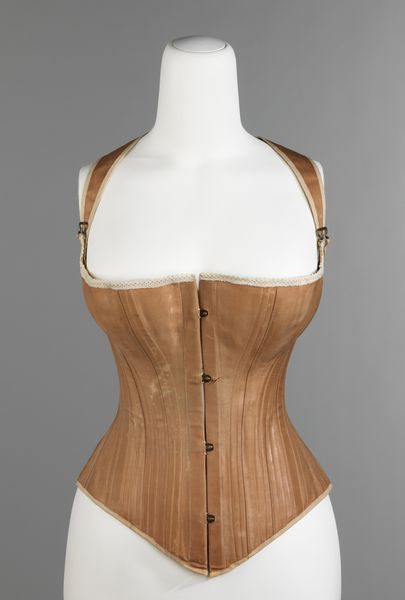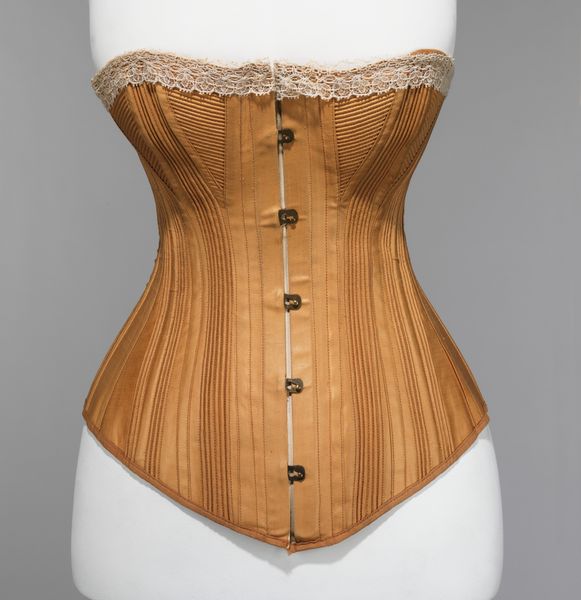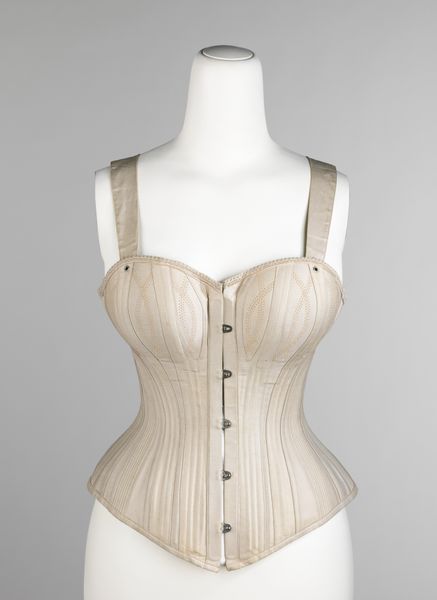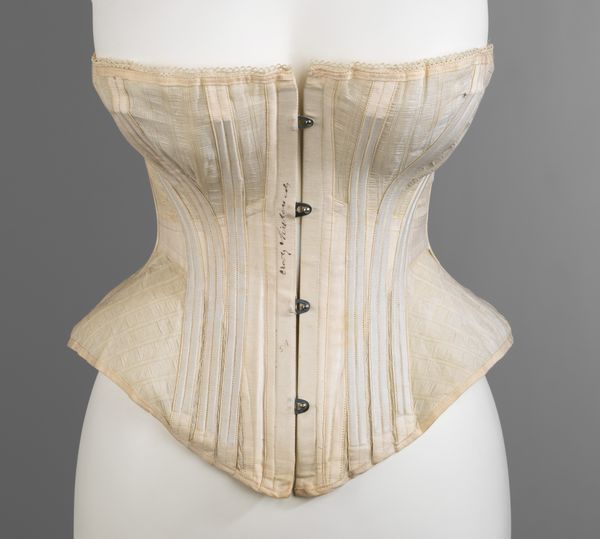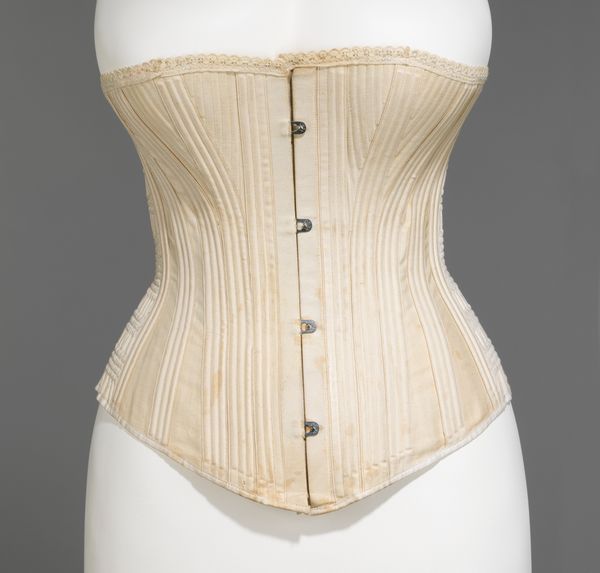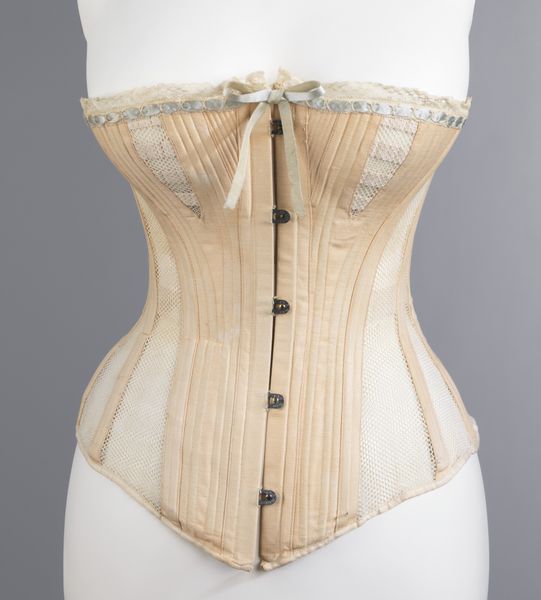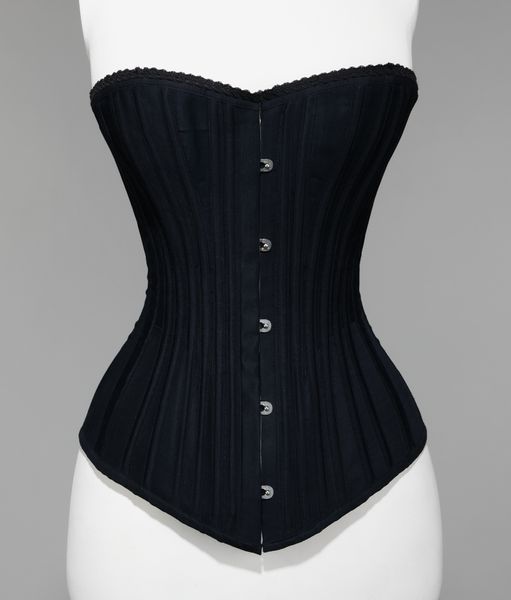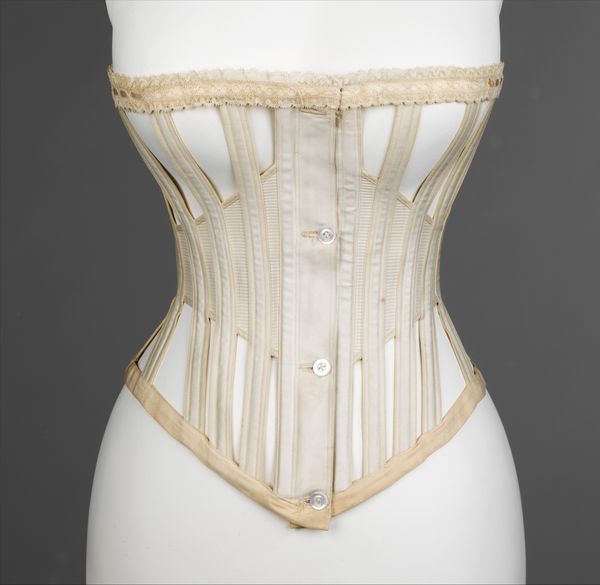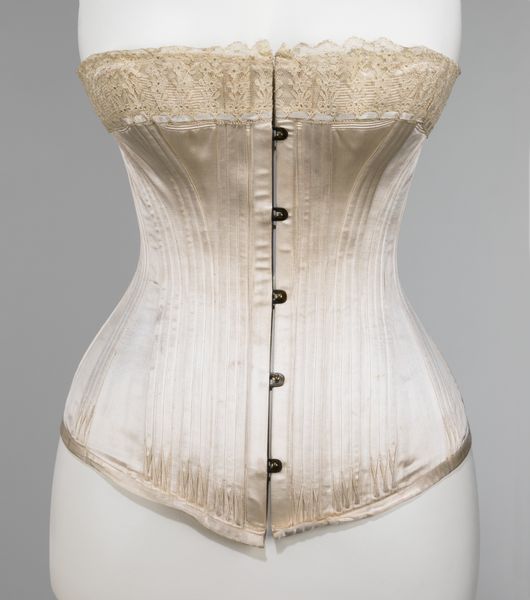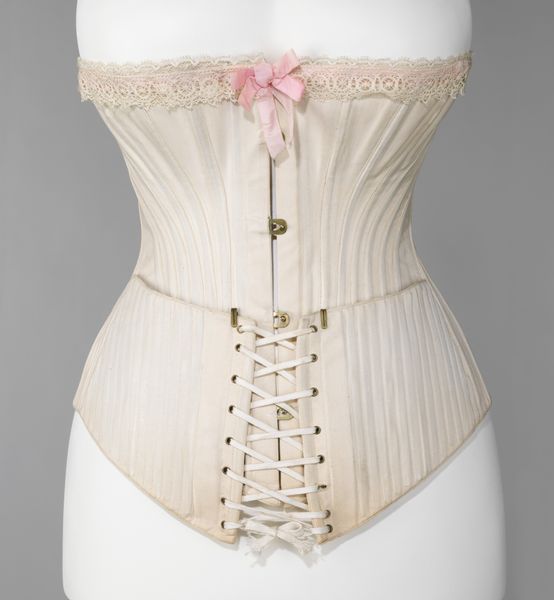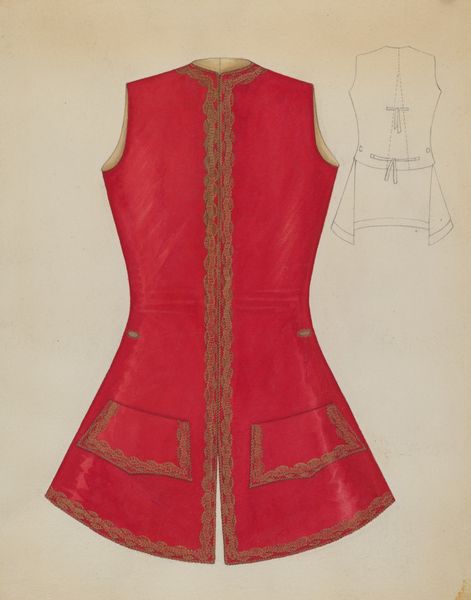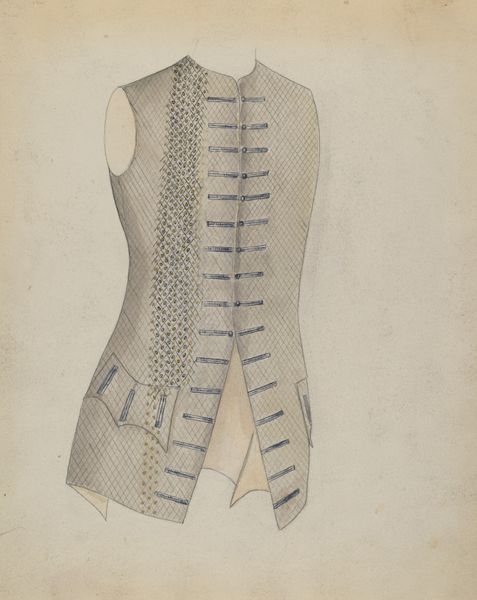
textile
#
textile
#
historical fashion
#
product design photgrpaphy
#
costume
#
fashion illustration
#
history-painting
Copyright: Public Domain
Curator: Let's explore this corset, a garment from the late 1880s, residing here at the Metropolitan Museum of Art. The construction utilizes a textile blend, designed to shape the body according to the fashionable silhouette of the period. Editor: Immediately, I notice the material quality, seemingly both robust and yielding; a light brown, vertically striped pattern covers most of the piece, interrupted at the top and sides by a more sheer mesh. I get a sense of incredible constraint, an intense shaping. Curator: Indeed, that contrast highlights its function. Consider the strategic placement of the vertical lines—they lengthen the torso visually, enhancing the desired hourglass figure. The structural integrity relies on meticulous seaming and boning. Editor: The garment’s structure, however precise, speaks volumes about the socio-political context of the time. The late 19th century saw increasingly rigid expectations placed on women's bodies, restricting movement and agency through fashion like this. How did women negotiate their identities under such constraints? Curator: Formally speaking, note the subtle details: the placement of each stitch, the proportional distribution of weight across the form, and the rhythmic alternation between rigid structure and sheer panels. These elements construct the desired shape—the 'ideal' figure as understood within that aesthetic paradigm. Editor: I would add that this ideal was hardly universal; race and class shaped access to it, as well as freedom from its constraints. We must ask whose bodies were being molded and disciplined by these garments, and what the cost was of these kinds of social conformities. Curator: Your points on historical access are essential. However, consider as well, how it stands as an object—detached from the body—a fascinating play of line and form. This emphasizes that art doesn’t necessarily represent freedom, but rather presents a world where specific shapes are encouraged. Editor: Right, understanding that is important to any discussion about agency. Thank you for walking me through the lines of that piece! Curator: And thank you for highlighting these garments as embodiments of historical and social power structures.
Comments
No comments
Be the first to comment and join the conversation on the ultimate creative platform.
